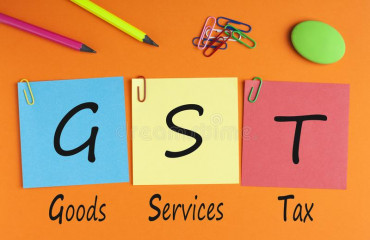The Economic Survey serves no surprises. Reflecting the popular discourse, it lists the triple slack of low private sector investment, agriculture failing to make farmers prosperous despite substantial subsidies, and sluggish FDI as each responsible for hurting growth and job creation. But doesn't spell out the policy changes needed to take the economy out of this pain.
It has hardly anything to say on the hot-button issues of centre-state financial relations that threaten to flare up during the current session of Parliament. The Survey is silent on questions such as: Should money be offered in lieu of demands for special status by regions, should the GST architecture be redrawn, what, if any, fiscal head room is available for these?
These are the questions that would have played on the minds of the makers of the budget that will be presented tomorrow. The survey could have shed light on the pros and cons of the various policy choices before the government.
It could have, as it "conservatively" projects a real GDP growth of 6.5–7%, "with risks evenly balanced, cognizant of the fact that the market expectations are on the higher side". However, it has not explained the assumptions that led it to arrive at this projection.
Also Read: Economic Survey 2024 has three critical cues for the discerning investor
The Survey 2023-24 is a document for the new government beginning a fresh term. It gets it right when it points out that after almost eight decades of relative global peace, the world is facing heightened uncertainties, climate change being just one of those: "Any escalation of geopolitical conflicts in 2024 may lead to supply dislocations, higher commodity prices, reviving inflationary pressures and stalling monetary policy easing with potential repercussions for capital flows…. It should follow that if India has nurtured a growth rate of 8 percent GDP annually in this hostile environment, there will be a need to push through a large number of domestic reforms."
The trouble is that the Survey is muted on what those reforms might be.
The chapter on agriculture repeats the well-flagged point on procurement of food grains at MSP (minimum support prices) and distribution of foodgrains at less than economic cost having financial implications for the government: "The economic cost of both wheat and rice witnessed a significant increase during the last few years due to an increase in MSPs and a proportionate increase in the incidentals".
But offers no politically feasible policy choices on how government can tackle the issue.
Similarly, for other agricultural practices such as hydroponics, it brings a wealth of evidence to make the case for crops diversification. These too are well known.
The Survey leaves us no better informed on the political economy problem at hand in this – how government can remove the skews in its handouts that hold back farmers from diversifying into crops more profitable than wheat and rice.
The Survey, quite skittish on evaluating the production linked incentive scheme, PLI, shows no willingness to examine all the tax money being poured into it has really helped in commensurate job creation.
The discussion of the growth challenges spans the long list of the slow pace of capital formation in the private sector, the financing of the green transition with public-private partnerships, the deregulation for small and medium enterprises, the need for an export strategy as well as a ramp-up of the education and skill policies. But it stops short of evaluating which of the current policies work and which don't.
Mint Primer: Hints on budget proposals from the economic survey
Unhelpfully, the Survey notes, "There are no historical precedents and templates to follow…What has brought the economy to its present state from where it was three decades ago may not take us to the next destination".
On the whole, it reads well but stops short of being a candid assessment of the economic performance of the economy or an analytical base for the road ahead, which is why it is not much of a direction finder for Budget 2024-25.
This lack of purpose contrasts with the Economic Surveys of the past that made the case for reforms, spelt out the costs of staying with the status quo, as well as the benefits that could accrue from changing policies.
Ashok Desai, chief economic consultant when Manmohan Singh was finance minister, wrote the Economic Survey for 1991-92, the year after the balance of payments crisis.
In the first chapter's opening paragraph, Desai noted that "sustained corrective action on the part of the centre and the state governments over the next few years is required to correct the fiscal imbalance".
Despite the caveat that the annual Economic Survey is an account of the government's performance in the past financial year, this was a candid prescription. Over the years, his surveys chronicled the recovery from the 1991 crisis and offered clear-eyed analyses of reforms needed to make sure old habits don't haunt the future, such as the slow progress on privatizing state-owned enterprises.
Subsequent notable Economic Surveys offered compelling arguments and analyses, even when the authors knew the governments weren't in a position to take the advice on board. The idea of a Survey is that the government should be well-informed, even when it is not in a position to pursue reforms. Today, the Survey needed more than ever. It has fallen short.

